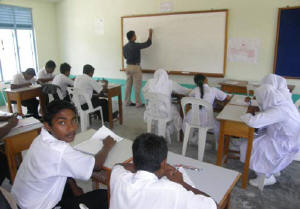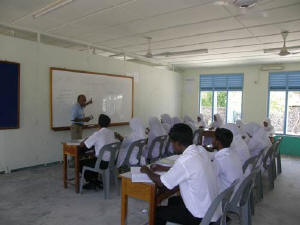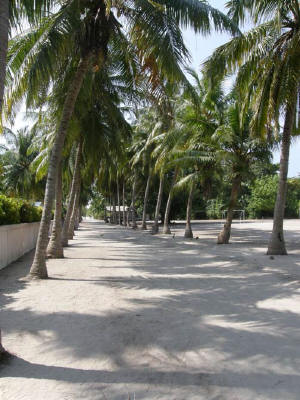Singapore
Malaysia Thailand
SE Asia Burma
Cambodia Vietnam
Laos Sri Lanka
Maldives Oman Yemen

Passage from Sri Lanka to Maldives
440 miles- 3 days 5 hours
We departed Sri Lanka on Sunday Feb 15. We had intended to leave two days previously but sailors have a superstition about starting a passage on a Friday. And this was Friday the 13th so that was a definite taboo. I know very few cruisers who would worry about black cats, walking under ladders or opening umbrellas indoors, etc- but I also know of no cruisers who start passages on a Friday. While we are not generally superstitious most of us realize that there is so much that can go wrong out there with a small boat at the mercy of a big ocean we are not willing to add any more danger to our trip- funny thing.
By Saturday there was an unseasonable west wind blowing in spite of the supposed Northeast monsoon which started a month ago. We waited another day and left on Sunday. The winds should have been back to the east but instead they continued light from the west- the exact direction we are heading so we motored against the wind much of the first day. For the next few days we continued with frequently changing winds from 5 knots to 25 knots. One minute we would be sailing along at 7.5 knots and a few hours later we would find ourselves motoring with no wind but still lumpy seas. Our last day we motored for 21 hours.
Most amazing was the continuous ship traffic. Our destination was Uligamu the northern most of the Maldives islands and our route took us near the shipping lanes. Each month there are hundreds of cargo ships and tankers coming from the Pacific, Singapore or Australia and they round the tip of India and head for the Red Sea and Suez canal. At times we had 5 or 6 vessels in sight and were very grateful for our new AIS receiver which told us the course and speed of each ship and exactly how close it would come to us. At one point our AIS receiver was picking up 18 ships though many were quite a ways from us. It was also fascinating to read the AIS transmission about each ship and see how large they were, what they were carrying and where they were headed. The most memorable was a Supertanker or VLCC (Very large Crude Carrier) that was headed to the Gulf for a load of crude oil. His length was nearly 1,200, feet his beam or width was 187 feet and his depth underwater was 65 feet- to top it all off he was traveling at 25.3 knots! (To read more about AIS click here).
During the passage we frequently had dolphins surfing the bow wave which always brightens our days. I also caught a small tuna but after fighting him alongside the boat I lost him while pulling him aboard. The last day we hooked into a huge fish- probably 50 lbs and about 3 feet long. Dee saw him jump twice while I tried to set the hook but on the third jump he threw the hook from his mouth and swam free.
Arriving in the Maldives atoll was a treat as it was the clearest water we had seen since the Bahamas or Tuamotos in the Pacific in 2002. When it was calm I could see my anchor on the bottom in 65' of water. The snorkeling near the boat was very good and while spearfishing Rob even shot a large grouper that fed 4 of us.
Officialdom here was quick, polite and did not ask for any bribes which was a welcome change from our Sri Lanka stop. The people were all very friendly with the women covered and in shawls Muslim style but without the full veils seen in the Arab countries. The girls were very shy but the boys were as curious as kids everywhere. The streets were all sand and were swept daily and there were absolutely no cars that we saw on the island. Some of the other islands have huge tourist resorts but Uligamu is very quiet and laid back. In a recent move towards environmentalism they now make their houses out of cement rather than using the coral from the reefs as they have done for centuries.
One of the highlights of our brief stay was a boat trip to another island with a dozen other cruisers. It was great fun to let someone else navigate for a change and we sat back and watched our captain pull in tuna after tuna using the rather sophisticated method of a fishing line wrapped around his big toe.
On our last day in Uligamu Dee did laundry at the community well while Rob taught school. The most interesting of the three classes visited was the 10th grade class which of course was quite curious to learn how teenagers in America lived and what was important to them. Uligamu has no cars so it was quite hilarious when I explained the most important event ever in the life of an American 16 year old was learning to drive a car and get a drivers license!.
To enlarge any photo click on it then click on the back button to return here.
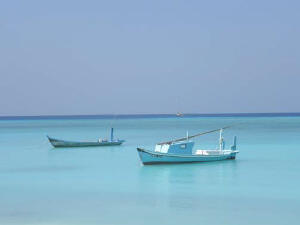
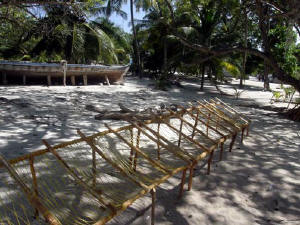
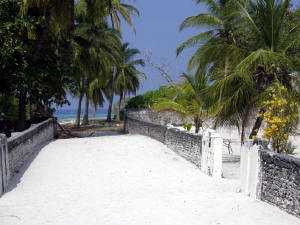
Local skiffs
Hammock chairs made from fishing net
Main Street- Uligamu
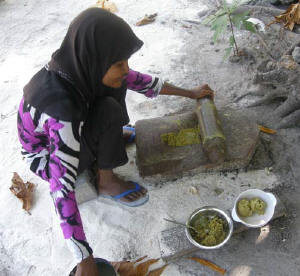
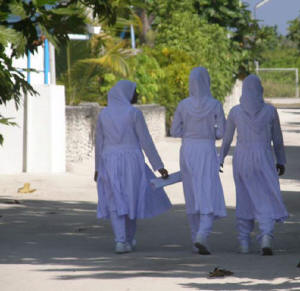
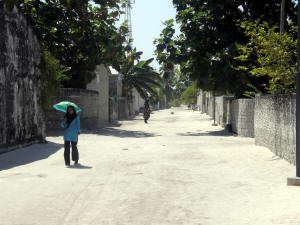
Grinding meal with a stone
Girls walking to school together
Noon in Uligamu
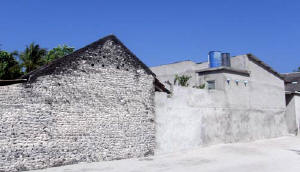
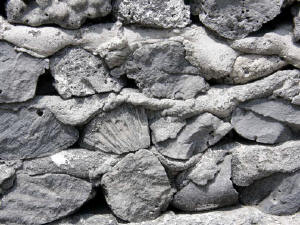
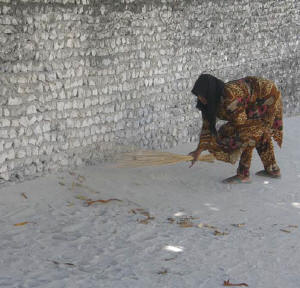
Old style coral house and new concrete one
Coral and cement wall
The streets are swept daily
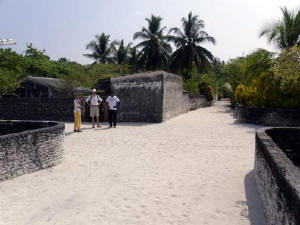
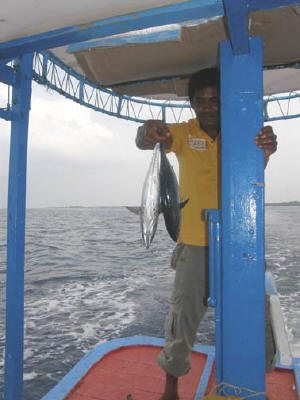
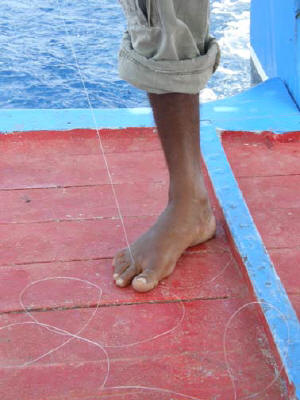
Checking for traffic at the main intersection
He caught 7 tuna in an hour using a line tied to his big toe.
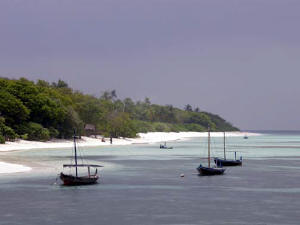
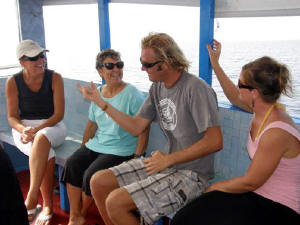
Sail powered fishing skiffs
Lynne, Dee, Matt and Rose

















